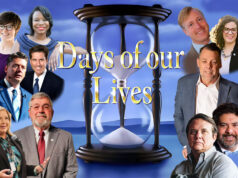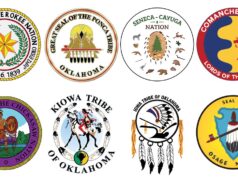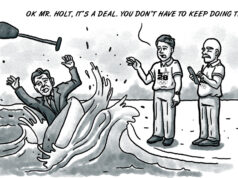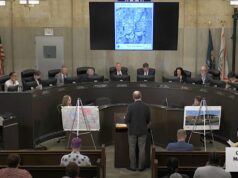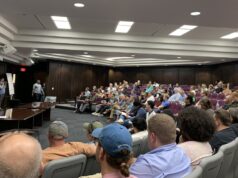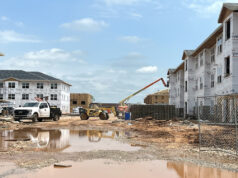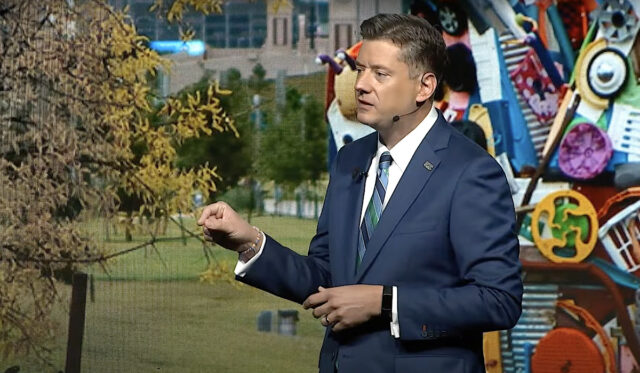

Oklahoma City voters will be asked in December to authorize a sales tax extension to pay a massive portion of a $900 million arena for the Oklahoma City Thunder, a proposal that Mayor David Holt said would keep the team in OKC until at least 2050.
The nearly $1 billion arena plan was announced by Holt on Tuesday afternoon and would primarily be paid for by an extension of the current MAPS 4 one-cent sales tax. In effect, the proposal would not raise OKC’s current sales tax rate, but the project remains massive and will require the use of vast public resources for its construction.
Holt and city manager Craig Freeman are scheduled to make a presentation before the OKC City Council on Tuesday, Sept. 26. The council must vote on whether to call the arena election, which as been proposed for Dec. 12. A simple majority is required for both the council vote and the public sales tax election.
“As this very public discussion played out over the last year, the people of Oklahoma City have overwhelmingly expressed to me two desires – 1) keep the Thunder for as long as possible, and 2) don’t raise taxes if it can be avoided. We have accomplished those two priorities with this plan, and it is truly a win-win for all of us,” Holt said in a statement. “Perhaps the most important aspect of the deal is the length — this is twice the commitment we received in 2008 and will keep the Thunder here beyond 2050. My children will be my age when this agreement ends. For a generation, we will retain the economic impact and quality-of-life benefits we have enjoyed as a big-league city. It is an investment that pays for itself many times over.”
If voters approve the new publicly owned arena, Holt said in Tuesday’s announcement that the Thunder’s ownership group will contribute $50 million to the project, or about 5.5 percent of the total cost of the proposal. Another $70 million of MAPS 4 funds previously intended for the current arena would be shifted to the new arena project.
Holt’s announcement Tuesday did not include details about potential terms for the Thunder’s eventual lease agreement with the city for the new arena. In a statement, OKC Thunder chairman Clay Bennett said the new arena is an opportunity for progress.
“For 15 years the Thunder has been honored to help lead the transformation of Oklahoma City and enhance the tremendous pride our citizens have in their community,” Bennett said. “We now have an opportunity to build on that progress, advance our status as a true big-league city, continue to grow our economy, and secure the long-term future of the Thunder. We look forward to continuing our partnership with Mayor Holt, members of the City Council, and the forward-thinking business and civic leaders in our community. Together we can develop an arena to serve as a crowning achievement in the ongoing renaissance of Oklahoma City.”
The Paycom Center is nearly a quarter of a century old and was built for just $90 million. It has the smallest square footage of any NBA arena and was not originally built with an NBA team in mind. The team will play at the current arena during the design and construction of the new arena, should it be approved by voters.
Earlier this month, however, the Thunder and city unveiled $20 million in upgrades of the existing arena, including a new scoreboard. Those upgrades were paid for by MAPS 4 money. It’s not clear what will happen to the current arena if a new one is built, nor is it clear where the new arena would be located.
‘For one, there has been no public discussion’
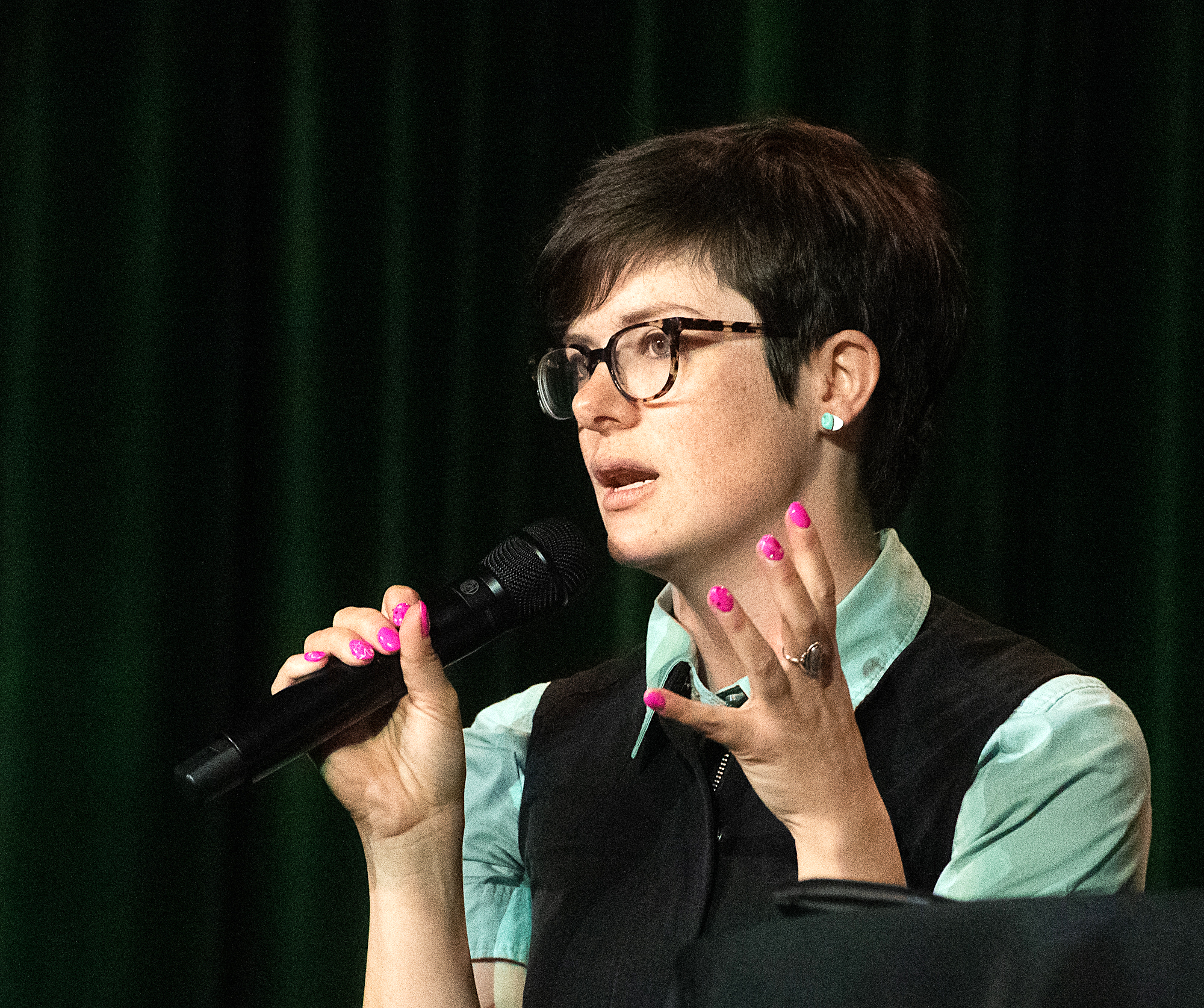
Ward 6 Councilwoman JoBeth Hamon said Tuesday there are plenty of questions and concerns around the arena proposal announced Tuesday, starting with transparency. The city’s press release began with the phrase “after 14 months of public discussion,” which caught Hamon’s attention.
“I am amazed that in the press release, they are talking about public discussion and collaborative dialogue between Oklahoma City leadership and the leadership of the Thunder because that has not been my experience,” Hamon said. “For one, there has been no public discussion. I have asked the city manager for over a year now to provide me updates because I wanted to be in conversation about this. But in hindsight, I realize I needed to be a lot more specific, and I realize I was putting more good faith in them taking me seriously in those requests than they were. To hear that this process has been 14 months and they’re just sort of springing this package that I have so many questions about, that doesn’t give me a lot of confidence as a voter, let alone a city leader who represents 85,000 people who haven’t been involved in the discussion.”
Hamon said she would like to see a community services agreement similar to the one made in Milwaukee in 2016 when that city constructed its new arena. The agreement made sure workers at the facility were paid a living wage.
“I think the people involved in this conversation and dialogue don’t realize that, as a city, we have a lot more negotiating power than we did 15 years ago when we first attracted the Thunder here,” Hamon said. “The idea that the benefits of this project will trickle down to residents at some point is an argument that always gets made. I would have liked to have asked if we can guarantee a basic liveable wage floor for the people who work there that would be guaranteed, similar to what Milwaukee did, but I believe we could have gone further than that if we truly believe this is something the residents want.”
Hamon also compared the exhaustive hearing and public meetings process that occurred during the leadup to the MAPS 4 vote in 2020 to the process of the new arena plan rollout now.
“I find it kind of insulting — this idea we just have to send it to the voters and see what they say — when in the MAPS 4 process we went through a year of actual public input and then extensive, eight-hour-long public meetings for the same amount of money,” Hamon said. “But apparently now it’s too short of a timeline, and this is what we’re getting, and we just have to send it to the voters.”
She also cited the $5 million per year that the city provides for the arena to cover some of its operating costs, including utilities paid for by the city. The Paycom Center is currently managed by ASM, which runs stadiums and arenas globally. Hamon compared that with what nonprofits have to do to receive city funding.
“The hoops and reporting about how that money is being used, what the benefit to the community is, the onus is put on them to provide the justification as to why this is a good investment, and they also have to provide extensive reporting on what they’re doing. Whereas over $5 million this year, we’re just handing that out to subsidize something with that entity who is not required to provide that same level of reporting. There’s just something unfair about that process.”
‘Voters will have to decide if this is the right package’
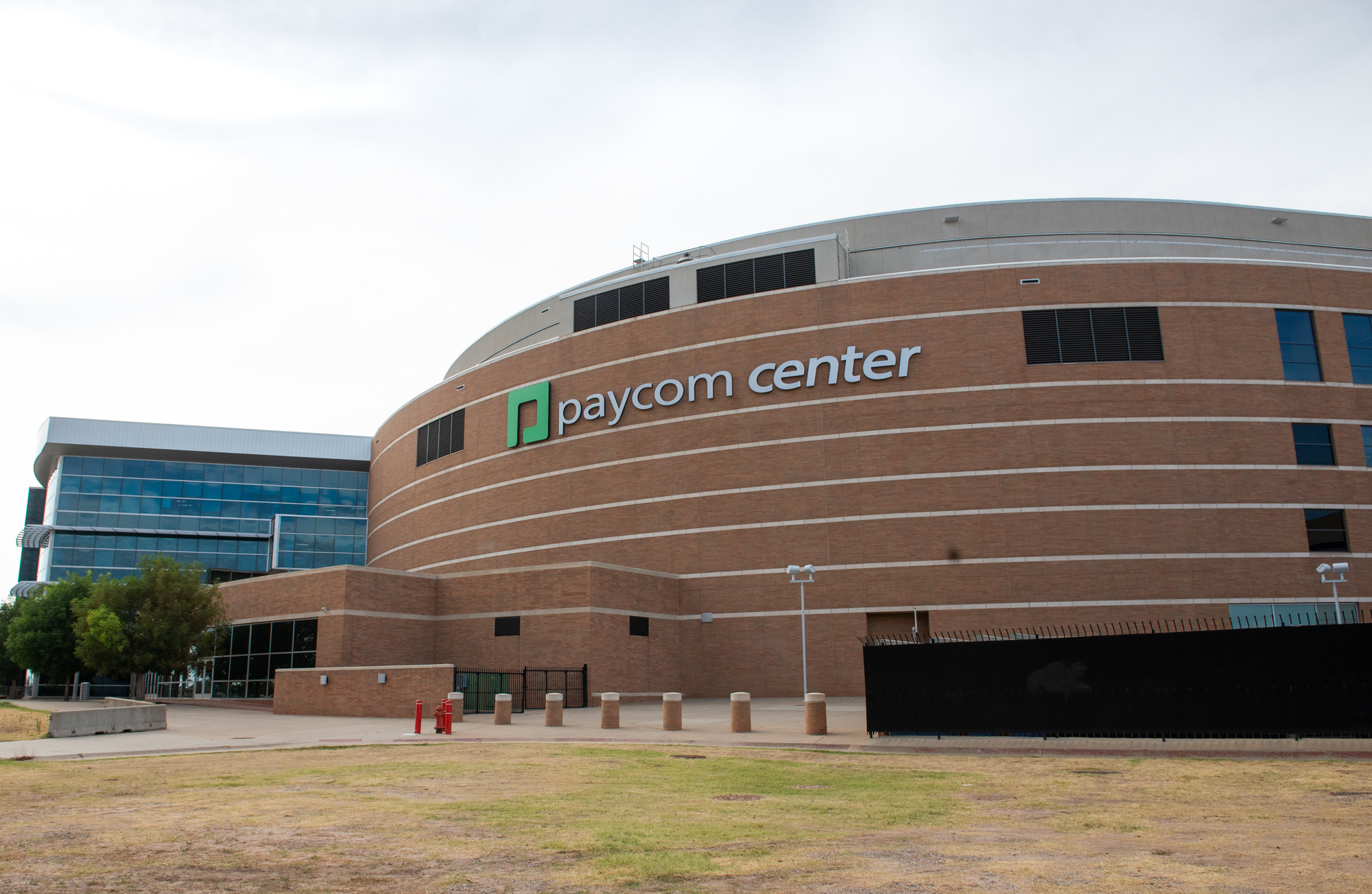
Ward 2 Councilman James Cooper said while he is glad the Thunder would be staying in town if the package passes, he’s interested in learning more about the proposal.
“I think it’s good, insofar as with this agreement we can guarantee the Thunder will remain in OKC for a quarter century,” Cooper said. “I will be curious what a state-of-the-art arena looks like in the end. I would have liked to have seen more from the owners, because the public would be putting forward a very large investment. I understand that with the original arena all those decades ago, the Thunder wasn’t here when we built it. While I’m thankful that our Thunder friends are contributing money and will be part of a collaborative process, I do wonder if the public would like to see more skin in the game. Voters will ultimately have to decide if this is the right package.”
Bennett bought the Thunder in 2006 for $325 million. Today, the franchise is worth an estimated $1.75 billion, making it the 27th most valuable franchise in the NBA.
Last year, Holt told NonDoc the Thunder’s current net worth is not actual cash and therefore it shouldn’t be assumed the team could foot the entire bill for the new arena.
“I don’t know at this point where the money will come from,” Holt said in a 2022 interview. “I couldn’t speculate on that. But as far as the value of the team, that’s not really relevant. That’s not something you realize until you actually sell. It’s like an O. Henry story. If I had a Van Gogh on the wall I would be rich, but I would be cash poor because I wouldn’t realize the value of the painting until I sold it.”
Like Hamon, Cooper would like to see a community benefits package be part of any deal with the team. Cooper said there should be discussion about ideas like hiring local workers to learn skills while participating in the construction of the arena.
“I think for me the most important question facing us in the conversation is are we really ensuring that we level up similar to what Milwaukee did with the owners of the Bucks,” Cooper said. “The creating of a hiring haul targeting areas of that city that had been the hardest hit by underemployment and unemployment. I think we need to be intentional in our outreach. There’s absolutely no reason why we shouldn’t be trying to mirror that.”









